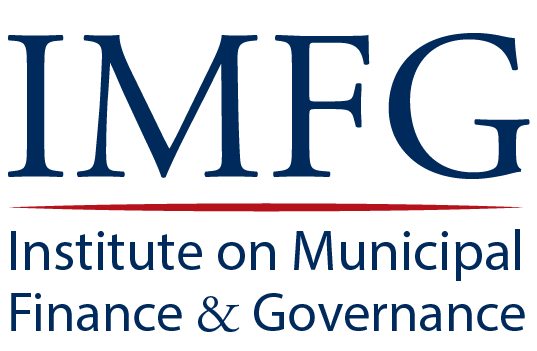The Institute on Municipal Finance and Governance (IMFG) has been an integral part of my scholastic and professional life since I received the Allan Broadbent Fellowship (now the IMFG Graduate Fellowship) in 2009. At that time, I was about to enter a second year of doctoral studies in economics at the University of Toronto, with plans to write a municipal finance–focused dissertation. It is hard to believe that more than 15 years have passed, filled with papers, presentations, roundtable discussions, debates, and informal interactions facilitated by IMFG.
As part of the commemoration of IMFG’s 20th anniversary, I would like to review the case for development charges as presented in my latest two IMFG papers: Development Charges in Ontario: Is Growth Paying for Growth?[1] and Development Charges and Housing Affordability: A False Dichotomy?[2]
The first paper, published in 2019, addressed a void in the literature on the economic function of and rationale for development charges. Using a mathematical model, I demonstrated that in the absence of development charges, property taxes and user fees would be inefficiently high, and municipal services inefficiently low. Despite the oft-cited principle that growth should pay for growth, I also showed how Ontario’s Development Charges Act fails to reflect that principle.
Since development charges in Ontario municipalities are used only for the recovery of growth-related capital costs, this paper focused on the question: Can general property taxes and user fees efficiently and sufficiently recover growth-related capital costs? I reasoned that the question could be answered yes only if the capacity of municipal capital assets could be increased incrementally to match growth.
While some municipal assets – such as local roads and watermains that form an integral part of a development – can be extended incrementally, my experience in capital planning shows that municipal capital asset portfolios are largely indivisible. That is, engineering and legal constraints as well as the need to minimize costs lead municipalities to acquire or build capital assets with excess capacity reserved for growth. For example, rather than annually replacing a sewer in response to growth-driven increases in sewage flow, the sewer is constructed with sufficient excess capacity to accommodate all growth anticipated before the sewer requires replacement.
Although the creation of excess capacity is efficient, it means that growth-related capital costs are incurred well in advance of the growth which gives rise to them. As incoming ratepayers pay property taxes and user fees only after growth has occurred, the rates underlying these revenue sources would have to be raised considerably to fully recover growth-related capital costs. Such an approach would shift growth-related capital costs to existing ratepayers. This problem is what I call the “externality of excess capacity.”
To resolve the externality of excess capacity, and avoid having existing ratepayers subsidize growth, municipalities need an additional tool to recover from growth what would otherwise be a financial shortfall for growth-related capital assets: development charges. When properly formulated, development charges ensure that growth-related capital costs are recovered from growth through an appropriate combination of property taxes, user fees, and development charges, all levied at efficient levels. It is in that sense that growth would rightly pay for growth.
The second paper, published in 2021, responded to heightened controversy over development charges prompted by Ontario’s housing shortage. Several publications denounced development charges as a barrier to housing affordability, but they were characterized by oversimplified narratives and misconceptions of both development charges and housing affordability. By refining my previous work and defining housing affordability within a municipal context, the second paper articulated the connection between development charges and housing affordability. Accounting for the effect of municipal services, property taxes, and user fees on housing affordability, the paper demonstrates that development charges, when properly formulated, improve rather than diminish housing affordability.
In writing this paper, I realized I needed to define housing affordability within a municipal context, given the absence of such a definition in the literature. Too often, the concept of housing affordability is reduced to the price of housing. This oversimplification ignores the role of interest rates; housing quality, quantity, and location; amenities and services; and municipal property taxes and user fees. Clearly, these factors affect household welfare and thus housing affordability.
Perhaps the clearest example is interest rates. When these rise, housing prices fall, but does that make housing more affordable, meaning that policymakers should be encouraged to raise interest rates? Obviously not, as the lower housing prices reflect the present value of the expected increase in future interest charges on mortgages. The same logic applies to development charges. Reducing development charges not only forces municipalities to levy higher property taxes and user fees, rendering housing less affordable, but it causes municipalities to approve or service less development, eroding housing affordability even further. Indeed, elimination of development charges could raise property taxes and user fees by 30 percent or more for both existing and incoming ratepayers. Yet opponents of development charges have not demonstrated how such significant increases to homeownership costs would actually improve housing affordability.
Today, my analysis of development charges remains unchanged, and to the best of my knowledge my explanation of the externality of excess capacity as the rationale for development charges has not been refuted. Nevertheless, I have questioned why municipalities need development charges while business corporations do not. That question is valid and lies at heart of the case for development charges.
A fundamental difference between a municipality and a business corporation is that the latter is owned by shareholders. The capital required to expand a business corporation’s productive capacity is raised by its shareholders, either through increased equity or through loans. The investment capital is expended up front, with the expectation that the investment will generate an acceptable rate of return for shareholders through increased sales to customers. The business corporation turns to its shareholders, not its customers, to raise capital, therefore the externality of excess capacity does not arise. If the business corporation is liquidated, the proceeds are allocated to shareholders according to their stake in the corporation’s ownership.
By contrast, a municipality is a public corporation without owners and cannot meet capital expenditures using equity, since it has no shares to issue or sell. When a municipality needs to extend its services as it grows, it must turn to its customers, that is, ratepayers, to provide the required capital. To do so efficiently, the municipality must levy development charges (or the equivalent) on the development giving rise to growth.
As municipalities are territorially defined, I have come to think of property owners as the nearest equivalent to shareholders in a municipality. As properties are transacted and developed, stakes in the municipality are transferred and increased. If the municipality were to be liquidated, the proceeds would be allocated to property owners according to their deemed stake in the municipality. Stakes in services that are entirely or largely tax-supported would presumably vary according to property values, just as property taxes do. As for stakes in user fee–supported services (such as water and wastewater), they would align with historic average usage of the services or a similar measure of investment in the services.
While the liquidation of municipalities seems a remote possibility, it is in this sense that property owners are at once customers of and investors in their municipalities. As customers they pay property taxes and user fees, and as investors they pay, in the case of property development, development charges, and in the case of property acquisition, a price that reflects development charges and other features of the municipal environment. In this sense, development charges in a municipality correspond to share prices in a business corporation.
As Ontario continues to grow rapidly, we can expect the need for development charges to increase as well. At this time, many municipalities are revising their growth management, master servicing, and financial plans in preparation for growth. If municipalities are to do their part in addressing Ontario’s housing shortage, they need development charges that enable them to make the capital investments needed to accommodate growth.
As development charges are essential, I hope to see the Development Charges Act reformed to resolve two key deficiencies. One reform would remove all barriers to growth-related capital cost recovery, such as ineligible services, ineligible costs, and exempted development. Another would reformulate the calculation of development charges to reflect the property taxes and user fees that will be paid once new ratepayers move in. The first reform would increase development charges, and the second would decrease them. Such reforms would help ensure that growth pays for growth in Ontario’s municipalities, today and 20 years from now.
About the Author
Adam Found is an economist specializing in public finance and industrial organization. His research focuses on property taxation, infrastructure financing, and municipal governance and he has written and presented on these topics for IMFG. He has been working in the municipal, academic, policy and consulting fields. He teaches economics at Trent University and is currently President and Chair of the Municipal Finance Officers’ Association of Ontario.
Endnotes
[1] Adam Found, Development Charges in Ontario: Is Growth Paying for Growth? IMFG Papers on Municipal Finance and Governance No. 41, 2019.
[2] Adam Found, Development Charges and Housing Affordability: A False Dichotomy? IMFG Papers on Municipal Finance and Governance No. 56, 2021.
Footnote
Click to scroll to footnotes


